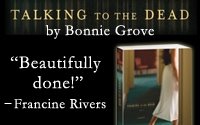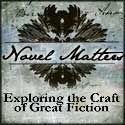
I've seen explanations like this: "The difference between showing and telling (in writing) is simple! Telling: Becky was sick. Showing: Becky sniffled into a tissue, then vomited. Voila!"
I beg to differ.
Perhaps we need to take the discussion of Show vs Tell and throw it in the same place as Becky's crumpled tissue. Writers need to stop talking as if Showing is some easy literary device. Something you can choose to employ or un-employ at whim.
It is, instead, the preferred method of storytelling. Method - not device. It is part of the theory of the modern novel. It is the discussion of intent, not meaning. It is the unveiling of the human condition, not the opening of a toolbox.
Didn't know there was a theory of the literature? There are several. But that is for another blog.
If Showing were simply about writing long and detailed explanations of the chain of action-reflection-reaction-action, no one would ever get a book written - moreover, no one would care to read the thing anyway. Who wants to read an encyclopedia of people in motion? No thanks. And this simple explanation doesn't give insight into why some of our most beloved novels have wide swaths - pages and pages - of narrative summary. These often pop up in fascinating tangents where a character has experiences something, and then ponders the nature of the experience at length. Is that "showing"? The answer is: Yes, in part.
Something much more interesting is going on when we speak of Showing. An author who shows the story is an author of light touch - one who respects her character's choices, who balks at easy answers, and stares messy incompleteness in the face. Showing is not an explanation of the action occurring in a novel - it is an exploration of the people themselves. It is taking the characters, laying them flat and rolling, like a scroll, their essence. Recognizing the inadequacy of our efforts, we, the writers, pull out what it is to experience the story we are telling. We examine a facet here, an angle there, all the while weeping for the parts we cannot tell within the limitations of the medium.
Showing is to cause the reader to be awash in the experience of your characters. It begins with word one, and ends as the last page is turned. It is the author's ability to step aside, and let the characters experience the story. It has nothing - I repeat - nothing to do with how many words you use to help the reader picture the turning of a door knob. Sometimes you just need to get the door open and who cares how it got that way - if I explained the tedious gripping of a handle, the turning of a wrist, the click of tumblers, it would slow the story down - bog it down, actually. Instead the door is opened. Ah! A greenish Becky enters, crumpled tissue in hand. Oh good!
So what do we call it when the author pushes aside the doldrums of "Becky was sick" in favor of "Becky sniffled into a tissue and vomited"? I would call it being precise.
I bid you good writing.









12 comments:
Ouch! (on behalf of the toes of all the authors/editors/agents who give the standard "show vs. tell" instruction)
I get what you mean but a lot of new writers will only be further confused. I think writers have to let the story unfold, keeping in mind that they want their readers to experience it, and tell the best story they can.
In the end, it will be some showing and some telling with no hard and fast rules or ratios.
Thanks for this post! It makes so much sense. I've been a bit irritated with how far the showing seems to go. Like the doorknob. As a reader, I really don't want to see everything. As a writer, I really don't want to show everything.
It is difficult to find the balance, but I find that as I get into my characters' skin - they help me a lot!
Brilliant! One of the best posts on this topic that I've ever read. Thanks for being bold enough to say that sometimes, narrative summary is necessary, but that what's most important is the character experience. So true!
Great post, Bonnie! And I agree: Vomitting is very precise...
1. We are apparently more like minded even than we thought, because I blogged LAST WEEKEND about show vs. tell, with nearly the same attitude.
2. You said it much better than I did, which is why you are the writer and I am merely the compadre!!!
Patricia, "no hard and fast rules" sounds perfect to me!
Kay, I agree, balance is subjective, but getting into the characters and letting them live the story is key!
Bonnie, I blush. You are so kind to say so.
Katy, Yes. Voimitting IS precise.
Nicci, WHAT? Okay every one! Click on Nicci's name and hop to her blog! We'd better not be doing some weird mind meld thing, Nicci. HA!
I've tagged you for a meme of seven bookish things, Bonnie. Hope you don't mind. If you have time, I'd love to read seven bookish things about you on this blog. The rules and mine are on http://eileenastels.blogspot.com/2008/11/seven-random-bookish-things-my-first.html
Blessings,
Eileen
P.S. The "Show, don't tell" concept is something that is ever developing in my writing. Making the choice of when to show verses when to tell is getting easier, though. Thanks for this post!
This show vs tell is a very confusing concept. Some days I think I have it, then others I don't. It's ever elusive concept will some day sink in, I hope :-)
Writing is a form of art, right? So there has to be some give and take. A voice. But that's just my two cents, which isn't even worth a penny these days. LOL
HA! I love it! I've found the explanations for showing vs telling confusing because it does always seem that you have to turn a sentence into a paragraph. Which then leads to the same thought you expressed: When will it end?
Same with the word was. It sometimes is okay to use it. :-) Actually, Andy Meisenheimer on Agent Rachelle Gardner's blog just talked about his. Or mentioned it.
Eileen: 'splain this "tag" thing to me. Use small words. Where do I respond?
Lynn, it IS a confusing concept because it's less than tangible. Done well, it hides in the background, unnoticed in the midst of a satisfying read.
Jessica, ah, the passive "was" word. Tsk tsk. Shunned! I think the best way to understand this good piece of advice is to write your story in the immediate (even when using past tense) so there is very, very little "was-ing" going on.
Wow!
What a fabulous explanation!
Of course, that's MUCH easier said than done, but for one who struggles with my "showing" it does give me hope that I don't have to show, show, show all the time.
I just have to make sure my showing and telling are experiencey.
(Yes, of course experiencey is a word!)
I love this post - I think it's easy to assume there's never a chance to 'tell' and it does have its place. I appreciate your post! :) Thank you!
Post a Comment